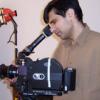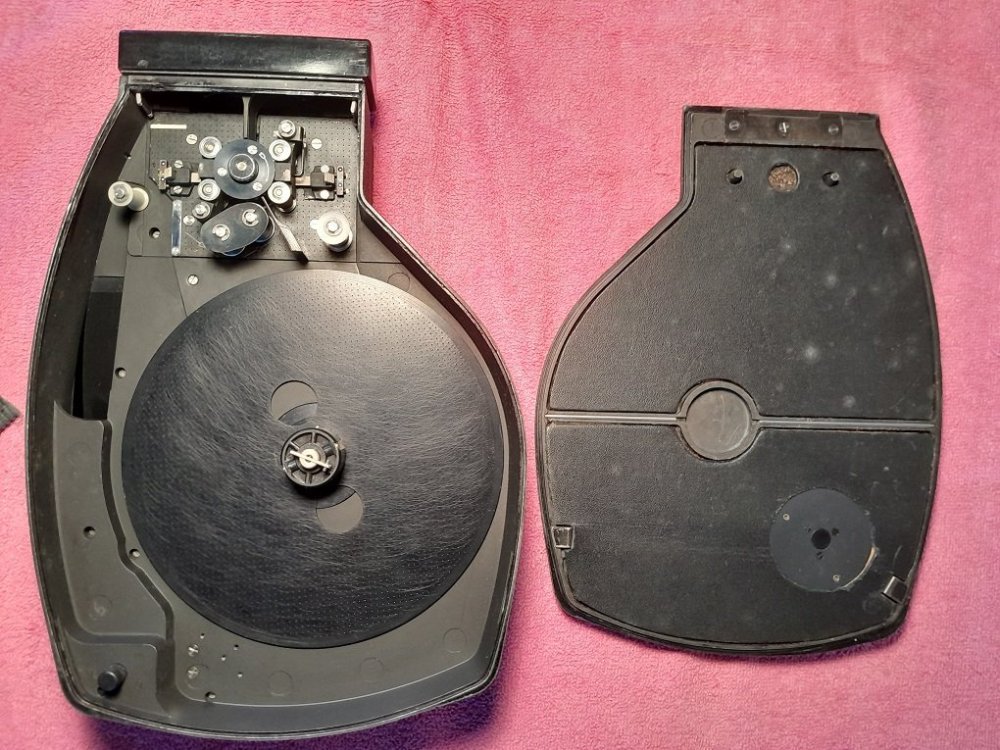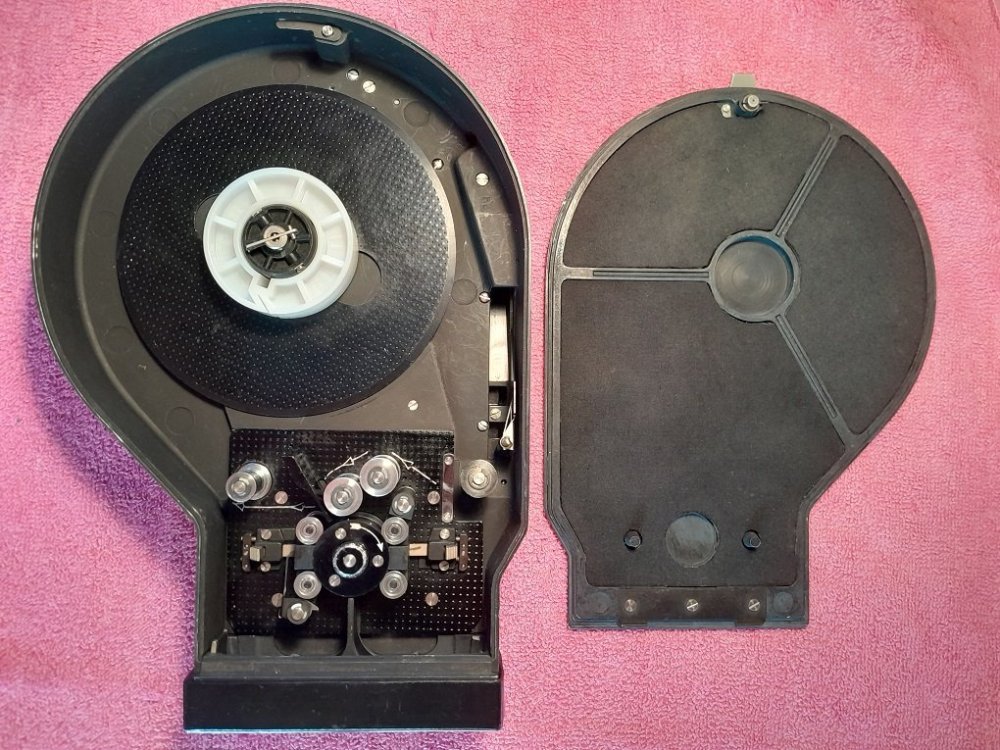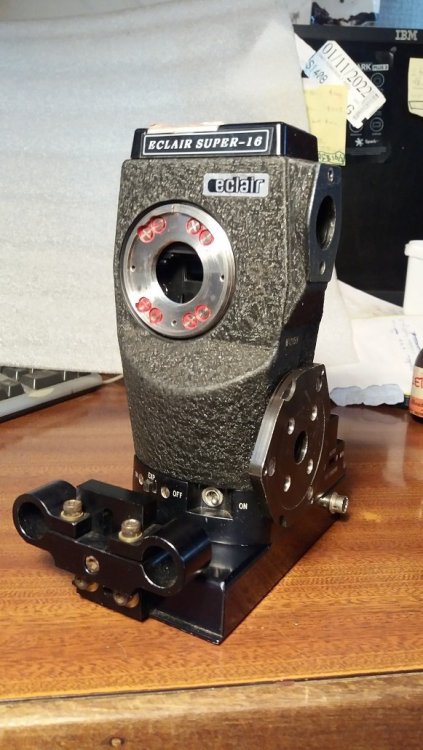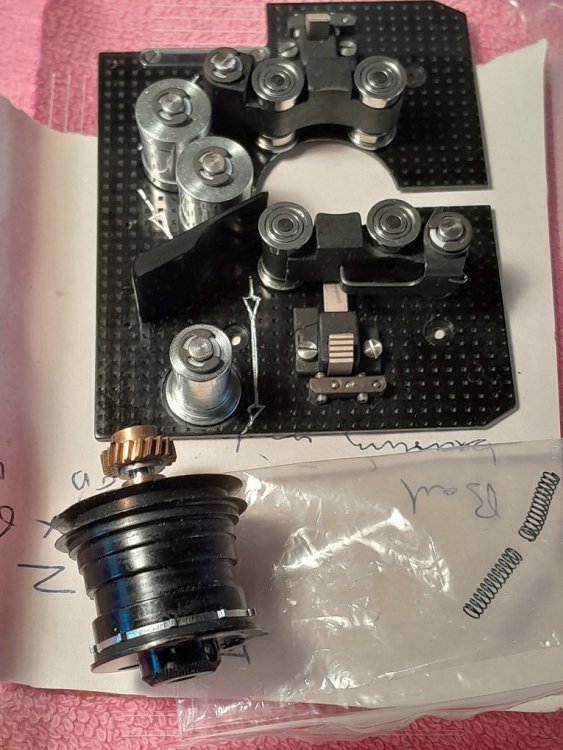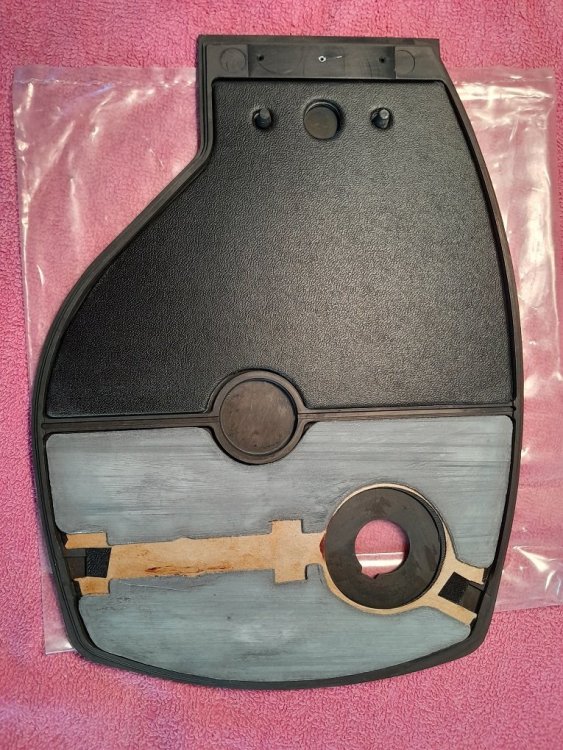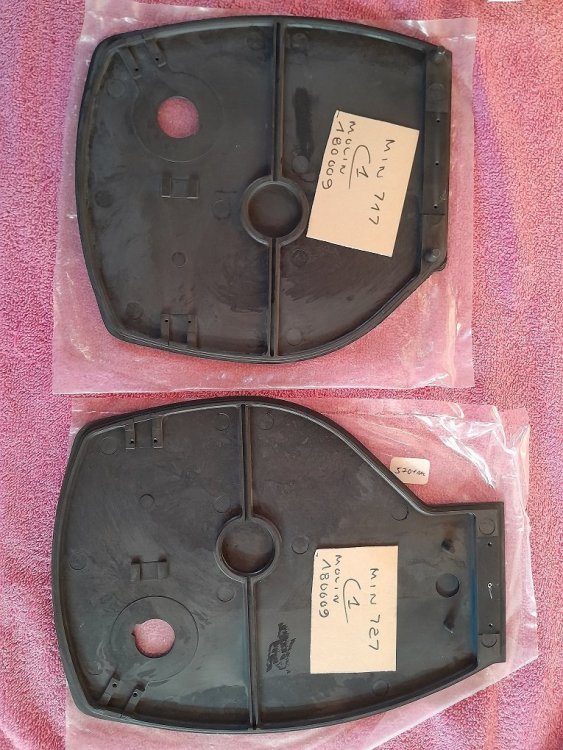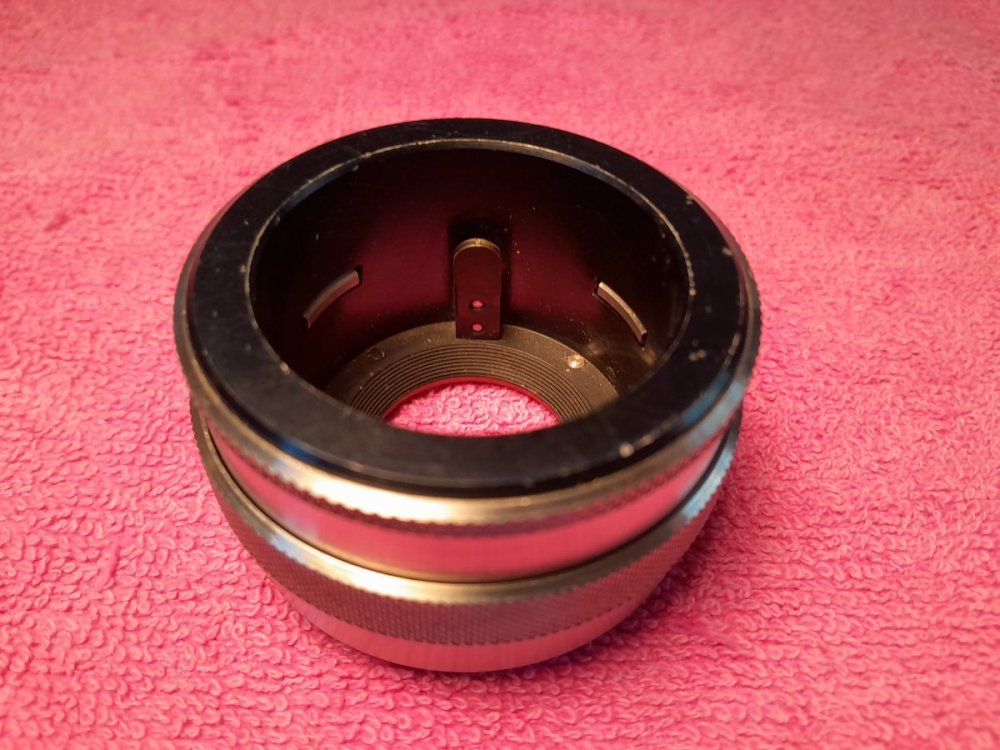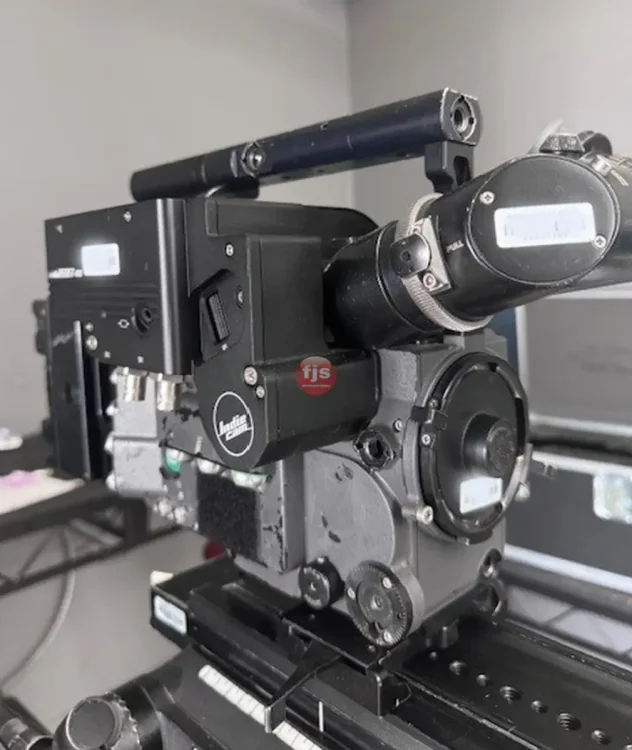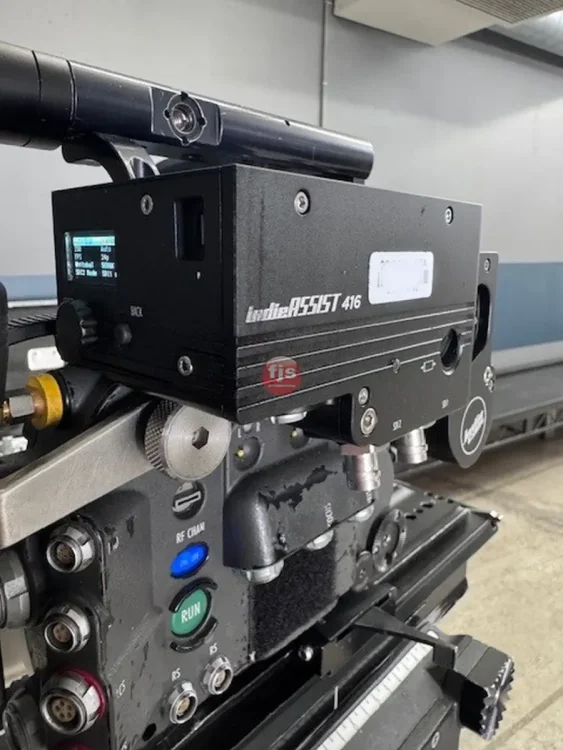All Activity
- Past hour
-
Hello, in this post i believe mr Wyss sums the options for c mount cine lenses. You will find more if you search the forum. These options are not found for cheap unfortunately, and like you mention it is often that they are abused. I would also look at sample images and videos of Tevidon lenses. The were made from Zeiss Jena for early CCTV cameras. I have not used them myself with my bolex, but you can find online many still image samples shot with m43 cameras, but also lots of videos shot with black magic pocket camera OG. Imho the quality is really nice and their price ok. One thing i am trying to verify is if these lenses can be mounted to bolex c mount, or they cant because of their large size (circumference), that could interfere with the central silver part of the bolex turret.
-
Oh WOAH! Thank you so much for this, It's really cool to see someone is doing this. I was afraid of buying something so old for so much money. This might be perfect, I'm looking on their site now.
-

Building Sound With 16mm Footage
alexandros petin replied to Jacob Kresak's topic in Post Production
If you want to keep it low budget check out the bolex Cine Assist Animo One aniMo one motor (kinda weird name) that i think it doesn't break the bank. I am not affiliated in any way, I am just also considering to buy it. Not a sync motor but along the many nice features it has, if you contact filmcurl you ll get details of a surprisingly steady motor for the price. http://cineassist.filmcurl.com/ i think the creator is a member of the forum. -
the new magazine uses normal Kodak aluminium daylight spools for both feed and takeup so there is no need to rewind film. just load a factory 100ft roll and takeup is on similar 100ft daylight spool. people were worried about the availability of original 200ft A-minima spools so I will skip that original plastic spool system entirely and make the magazine use the boring common 100ft aluminium spools everyone else uses including the Bolex and K3 people 🙂 ---------------------- if needing the 400ft magazine version there is very limited time window for ordering, need to know in July2025 if it is needed and partially paid for in early August so that I can start making it at the same time than the 100ft version. If missing this time window the possibility to make 400ft is lost or even in the very best case someone would need to send their own camera to me for 3 or 4 months for additional testing and design work if losing this possibility to develop the two mag versions side by side
-
You aren't going to have less grain by over exposing because it increases the contrast. The grain structure doesn't change if you over expose. So 50D would be the way to go and yes, if you wanted to over expose a tiny bit like a stop, you could retain better middle grey and black details, but you won't change the grain structure. Each of the Vision film stocks, is an entirely different emulsion, they have different looks as well. Many people prefer shooting 200T over box speed, simply because they prefer the look and it over exposes nicely and delivers a smoother grain structure similar to 50D than 250D. To truly change the grain structure, you need to shoot 35mm.
-

Best modern lenses for Super 16mm
Tyler Purcell replied to Mohammed Tahir's topic in Lenses & Lens Accessories
The 16mm Ultra primes are very good. I've had mixed results myself, but a lot of the material I've scanned that was the sharpest was with the ultra primes, so they are clearly the best, and I'm fairly certain they fit the SR's no problem. The for sure fit the SR3. -
will the film still need to be re wound with this solution?
-
Hello All! I bought a used Bolex Non Reflex at the beginning of the year, and it came with one 15mm lens. With it being a C-Mount and necessary for the lens to be Anti Reflex, I've been having a hard time tracking down and finding lenses that work with my camera that aren't absolutely busted or outrageously priced beaten up glass. With all of that being said, I'm looking for a small guide or list of what lenses work best with non reflex. Or even just some suggestions from people who had used newer lenses or adapted different lenses to the non reflex. Any help would be greatly appreciated!
- Today
-
Luis Hartmann started following Best modern lenses for Super 16mm and A-minima 100ft magazine by ALCS
-
Curious how it will turn out, thank you for continuing to innovate and improve!
-

Best modern lenses for Super 16mm
Luis Hartmann replied to Mohammed Tahir's topic in Lenses & Lens Accessories
I think Master and Ultra Primes work well with 16, but they usually don't fit on the SR because of the described VF problem. Some lenses do, some barely, most don't. Gotta try yourself. Maybe Sigma Arts are an option? Those should also be fairly cheap to rent. -
Hi everyone, I came across a cinematographer who adjusts the strength of diffusion filters based on focal length, whereas I usually stick to the same filter strength throughout the project—assuming I’m using the same lens kit (like 1/8 Black Pro-Mist on Master Primes, for example). If it’s a close-up where I notice more skin imperfections, I might even increase the strength. Here’s how he uses them: Up to 25mm: all filters at 1/2 25mm to 50mm: all at 1/4 50mm and above: all at 1/8 I didn’t have time to ask what the logic behind this was, so I’m curious to hear your thoughts!
-
Mohammed Tahir started following Best modern lenses for Super 16mm and 16mm minimum grain
-
Can anyone recommend modern lenses that are super-sharp and contrasty to use with Super 16mm? Preferably PL mount. They can be for purchase or rental. They'll be used on an ARR SR2 S16 camera. I suppose the other thing to consider is that SR2's viewfinder arm pivots just above the lens mount. Not sure if that gets in the way of some lenses. Thanks!
-
Christopher Nolan's THE ODYSSEY
Jeff Bernstein replied to Jeff Bernstein's topic in General Discussion
DEFY THE GODS "the shadow of a magnitude" / Keats, "On Seeing the Elgin Marbles" Okay, but what about these Greek gods? What is their fundamental attitude towards human beings? Friend Scrooby, working tirelessly, provides here a translation of the opening of the Trojan Women of Euripides (ll. 1–97), which not only answers the above questions, but also provides a treatment of the origin story of THE ODYSSEY. POSEIDON I have come up from the depths of the salty Aegean sea, POSEIDON, where the Nereids whirl in beautiful dances. Ever since Apollo and I put up smooth stone walls, perfectly measured, around this city of Troy, I have had a soft spot for the Trojans and their home. Now the city is smoking ruins, destroyed by the power of the Greeks, who built a wooden horse (a scheme of Athena's and built by the Phocian, Epeus), inside which warriors were hidden; it went within the walls of the city and brought destruction to the Trojan people. The sacred groves to the gods are now deserted; our temples run with blood. At the base of the statue of Zeus in the midst of his court, Priam, King of Troy, lies dead. Meanwhile, much gold and other spoils of war the Greeks are carrying to their ships. They await a wind to take them back to their wives and children, pleased to be going home after ten years of war. I have been beaten by Hera and Athena—it was they who destroyed Troy— so I'm leaving this famous spot and all of my altars here. Whenever a city collapses, there's no one left to pray, and the gods are no longer given their proper reverence. I hear cries and shouts from River Scamander. There, the women are being divided up, appointed by lot to this man or that man; many shrieking women are meeting new masters. Look there! See the miserable queen of Troy, Hecuba, lying by the door of the destroyed palace, if you want to see her. She is weeping many tears for many reasons; and it's worse for her—she doesn't know her daughter Polyxena is dead, murdered at the tomb of Achilles. Her husband and her sons are dead; and her frantic daughter Cassandra, whose chastity Lord Apollo preserved, is now Agamemnon's property against the wishes of the god, and the Greek king will force her to occupy his bed, and take her. Well then. Goodbye, my city of Troy, and your walls of smooth stone, once prosperous, now utterly destroyed and brought to nothing. If Zeus' daughter Athena hadn't done all this, you would still be standing tall. ATHENA You who are near to my father in power and reverence, may I forget our differences of foretimes and speak to you? POSEIDON Of course, Lady Athena. Talk with one's family charms the heart. ATHENA Thank you for your kindness. There is something you and I must discuss. POSEIDON Do you bring word of a new message from Zeus, or another god? ATHENA No. I want to speak of right where we stand, the city of Troy. This is why I have come to you. I hope to win an ally. POSEIDON You are going to cast aside all your hatred for this place? Now you feel compassion while the city burns to ashes? ATHENA Let's return to my original point. Will you hear my words, and then undertake to do with me what I would wish to do? POSEIDON Of course. But what is it you want? This is what I want to know. ATHENA I want to cheer up the Trojan people, my former enemies; and bring down upon the Greek army a bitter, painful return. POSEIDON What is this with you, first hating very much, and now loving? ATHENA Are you aware my temples have been treated outrageously? POSEIDON I know; it happened when Ajax carried Cassandra away. ATHENA And for what he did the Greeks gave him no punishment at all. POSEIDON And it was with your strength that the Greeks annihilated Troy. ATHENA This is why, if you are willing, I am going to hurt them. POSEIDON I am ready to do as you say. What would you have me do? ATHENA I want their voyage home to be thrown into confusion. POSEIDON While they're still standing here on land, or sailing on the sea? ATHENA When they're sailing home from Troy. Zeus will send thunderstorms and hail and contrary winds relentlessly. He promises me a lightning-bolt to throw down at their ships and I will consume the Greeks in fire. You, Lord Poseidon, will make the passage of the Aegean a treacherous way of mighty waves and much clamour, with whirlpools to drag them down. Fill all the coastlines of Greece with dead bodies. Then they will learn to reverence me rightly in my temples, and other gods, too. POSEIDON I can do that; so we need not waste any more words on it. The beaches of Greece will be covered in many dead bodies. So then. Go on up to Olympus, and take the lightning-bolt from your father's hand, and wait for the Greeks to let out their sails. How dumb are these mortals! They pillaged Troy, desecrated tombs and our temples, yet aren't nearly smart enough to save themselves. -

ALCS cp16r 45-speed crystal electronics
Aapo Lettinen replied to Aapo Lettinen's topic in Cinema Products
longer video with explanation https://www.youtube.com/watch?v=awlTwf3nyZA -
My A-Minima magazine project is moving forward now. Working on a newly made magazine which allows using standard aluminium 100ft daylight spools with the camera. Should have some kind of prototype in September and the final mags shipping before Christmas. I may post some 3d printed examples in August already when tuning the design. Price depends on how many ordered and when they are paid for. Preordered ones are considerably cheaper and preorders will help improving the finishing quality so highly recommended to contact me early on if interested in ordering these magazines. Approx target price for preordered ones is 2.5k or something like that. I will probably make one batch of preordered ones and maybe later on next year one extra batch which is more expensive, about 30% more expensive probably. Will try to keep the price under 3k in any case. They will be cnc machined in any case, made mostly out of aluminium and aiming for very good price-quality ratio. I should have possibility to make 400ft core load mags too if preordered very early on but they would be much more expensive than the 100ft. I would estimate from 4k to 5k price for the 400ft as it needs advanced electronics and more cnc parts and film testing. Dm here or on instagram (aaplet14). Facebook messages don't work
-
I've decided to sell all my remaining ACL components and parts. The S16 body is not quite ready to sell, but we begin...Any offers please direct message me or email me viz(at)xtra.com.nz or phone me with WhatsApp.. 64 274 377 086 (08:00 to 22:00 NZT) There are links to more pics at dropbox under each heading. Any problems with access let me know. I may edit this later if any errors or improvements needed. I also listed this on the Cinemarketplace forum ..https://cinematography.com/index.php?/forums/topic/103570-eclair-acl-components-and-parts/ 1) ACL II S16 BODY, no motor or eyepiece pics at dropbox.. https://www.dropbox.com/scl/fo/fs7ao30o45ffyd9preapg/AEJhWgq9P1hq6-PZjIJan1U?rlkey=a5tusjicswi72qi6bp7aeru99&st=w8sxyd47&dl=0 The item is with a technician at Panavision getting a new 9 pin Canon motor connector. It may be with him for a month 'till he has time after hours, so there is time to consider how best to sell it and take questions..... My spare ACL II body, no motor, eyepiece or handle module. S16 conversion by Visual Products. VP conversions are about the best, with really nice, simple ground glass markings. The ACL II base, I don't know if it was a bespoke factory original or someone's aftermarket piece. The machining, apart from the front shape, looks the same as factory standard, including the labeling. The rod mount is almost integral at the front.... looks really useful..no plate needed. Needs a CLA and a couple of hopefully small repairs... I've never used it, but ran scratch tests to assess it (scratch free). Sounded like the shutter was just lightly ticking against the body. Also, one of the motor mount threads on the body is striped, so probably needs a thread insert. I emailed Paul at Visual Products and it sounded like the shutter ticking noise might get fixed within a CLA. It may be something easy like the mirror connecting rod. If it's difficult then maybe a couple extra hours. There could be a couple of options on how to sell this....I could sell as is. When the connector is replaced we could assess the noise. Or, I could send it to Paul at VP for CLA, repair then set a price A thought re the stripped motor mount screw.... That one screw has only a very thin section of body casting to anchor to. The other 3 screws are threaded into much stiffer sections, so I wonder if 3 screws are probably enough. I can ask Paul later. Added notes... If there is a new 9 pin Canon connector in one of the photos please ignore it. It's not included. The 9 pin Canon connector at the side grip location..has a big chip out of the plastic surround. The metal pins are all good and the connector works just fine. 2) ACL multispeed motor pics at dropbox https://www.dropbox.com/scl/fo/ef8hntmi8lswndudmlwjo/AKYnbwbJWNZXU0aLn9Ezps4?rlkey=2uofa0lgo7xo7fy7ni2bbhdjw&st=9yvsy87o&dl=0 Heavy duty, late model Thomson crystal sync motor (MIMUL) with crystal speeds of 8fps, 12fps, 24fps, 25fps, 50fps, 75fps. Mirror parking on camera stop (meaning the mirror always stops in the viewing position). Serviced by Andrzej (AZ Spectrum) in July 2023 and not used since. Cosmetic condition quite good. A couple scratches and paint chips that the techs touch up. AZ Spectrum invoice in the photos. PRICE. $1300 3) FRENCH ACL MAGS dropbox pics at https://www.dropbox.com/scl/fo/peubt0fb83952tjzbict6/AMVW4xSgubP7MAUtm5BrUG8?rlkey=ogxfip3ppmrtm1nngh593b7uq&st=ruyb70g9&dl=0 All mags are late model French with the separate little pressure plate over the gate. Like an SR, the film is held in a precise gap by the long pressure plate, and only the little plate over the gate applies pressure. - 400' French ACL mag, S16, machining looks nice. Fairly tidy looking. Needs CLA, but really just lubrication. ("Pat 1"), #SD-503, with cap. PRICE USD800 - 400' French ACL mag, standard 16. Fairly tidy looking. Needs CLA, but really just lubrication. ("FR3"), #SC-797, no cap. PRICE USD650 (you can buy a 3D printed cap on eBay for USD55) - 200' French magazine,standard 16, in as new condition, friction feels low, but should have lubrication soon, #D98, with cap. PRICE USD800 4) ACL MAG PARTS SELL dropbox at https://www.dropbox.com/scl/fo/ahux7jypyku5ls9u7f449/ABc2z_xeJVOUdHABIouUYtw?rlkey=y0r1oxtpnatyz6dz274w6hq4l&st=mf9hn5z0&dl=0 400' English mag for parts. Has a French throat, otherwise is all English. Missing feed side door, platters. Belts, spindles, rollers, guide shoe assembly all good. Drive sprocket, I cant remember what the ball bearing was like. Partly disassembled, I could probably disassemble completely and just ship the bits and pieces, leaving the body and door behind. USD100 as is...... USD120 just the bits and pieces, no body/doors.... Support plate assy with guide shoes and rollers, complete less sprocket assembly (MIN 445 E/A)...New Later model French. No mounting screws. One of the recommended mods if running high speed. See the Eclair ACL Parts Catalogue (not the UK one), page4, shows pics of the different plates. Drive sprocket spindle assembly for French mag (315 E..?)....used Ball bearing and shaft feel ok but shaft has a little bur right near the tip that needs smoothing before reassembly. The "pulley" on the assembly body that drives the take up belt has some little dents and burs that will need to be smoothed out (mostly just careful straightening. PRICE USD120 for support plate assembly and sprocket assemblies together..... French 400' mag doors...New. Brand new alloy doors, L/R. No latch hardware. There is one white disck for the big latch knob. (MIN 717, 727) Sound deadening for French 400' take up door...New (MIN 707/708) It has laminated layers. There is a lead impregnated layer. The factory screwed up when they laminated the rear part of the sound deadening, with the layers in reverse order. To use it, one would have to delaminate it and glue it back in correct order. The outer surface of the black vinyl stuff may then have old glue to clean off. Maybe one could use new vinyl for that part. USD160 for doors and sound deadening together...Shipping French 400' footage counter face plate. New. (MIN 748, 749, .. ?) Has 3 layers: printed metal face plate/ clear plastic/ inner metal face plate. PRICE USD150 for doors, sound deadening and footage counter face plate together...Shipping 5) Arri S adapter for Eclair ACL dropbox pics at https://www.dropbox.com/scl/fo/z02yjls363fa5kqavubia/AMgsr3uilOWRww8QTE-G0iQ?rlkey=zuljlulh4so0vwmjv3cmchrn6&st=wxzcuqjh&dl=0 TS/Arri-S (standard) adapter for Eclair ACL. This mount will let you use older Arri, Zeiss, Schneider lenses, also old Cooke Kinetal. The Kinetal will turn OK in the lens port if it is loosened a tiny bit (normally have a light smear of lubricant). This is the standard Arri S adapter that was sold with the ACL cameras. Good condition, all thread movements smooth, some signs of use, some wear on the anodized coating on the front flange, but nothing that should affect FFD. Rear flange good. Just what's in the photo, no front or rear cap. There are proper caps for an Arri S port that you could buy somewhere, or scrounge up used ones. Being a Kiwi I have used a plastic cap off a vegemite jar. I can maybe find a spare one to go with. PRICE. $450
-
I've decided to sell all my remaining ACL components and parts. The S16 body is not quite ready to sell, but we begin...Any offers please direct message me or email me viz(at)xtra.com.nz or phone me with WhatsApp.. 64 274 377 086 (08:00 to 22:00 NZT) There are links to more pics at dropbox under each heading. Any problems with access let me know. I may edit this later if any errors or improvements needed. 1) ACL II S16 BODY, no motor or eyepiece pics at dropbox.. https://www.dropbox.com/scl/fo/fs7ao30o45ffyd9preapg/AEJhWgq9P1hq6-PZjIJan1U?rlkey=a5tusjicswi72qi6bp7aeru99&st=w8sxyd47&dl=0 The item is with a technician at Panavision getting a new 9 pin Canon motor connector. It may be with him for a month 'till he has time after hours, so there is time to consider how best to sell it and take questions..... My spare ACL II body, no motor, eyepiece or handle module. S16 conversion by Visual Products. VP conversions are about the best, with really nice, simple ground glass markings. The ACL II base, I don't know if it was a bespoke factory original or someone's aftermarket piece. The machining, apart from the front shape, looks the same as factory standard, including the labeling. The rod mount is almost integral at the front.... looks really useful..no plate needed. Needs a CLA and a couple of hopefully small repairs... I've never used it, but ran scratch tests to assess it (scratch free). Sounded like the shutter was just lightly ticking against the body. Also, one of the motor mount threads on the body is striped, so probably needs a thread insert. I emailed Paul at Visual Products and it sounded like the shutter ticking noise might get fixed within a CLA. It may be something easy like the mirror connecting rod. If it's difficult then maybe a couple extra hours. There could be a couple of options on how to sell this....I could sell as is. When the connector is replaced we could assess the noise. Or, I could send it to Paul at VP for CLA, repair then set a price A thought re the stripped motor mount screw.... That one screw has only a very thin section of body casting to anchor to. The other 3 screws are threaded into much stiffer sections, so I wonder if 3 screws are probably enough. I can ask Paul later. Added notes... If there is a new 9 pin Canon connector in one of the photos please ignore it. It's not included. The 9 pin Canon connector at the side grip location..has a big chip out of the plastic surround. The metal pins are all good and the connector works just fine. 2) ACL multispeed motor pics at dropbox https://www.dropbox.com/scl/fo/ef8hntmi8lswndudmlwjo/AKYnbwbJWNZXU0aLn9Ezps4?rlkey=2uofa0lgo7xo7fy7ni2bbhdjw&st=9yvsy87o&dl=0 Heavy duty, late model Thomson crystal sync motor (MIMUL) with crystal speeds of 8fps, 12fps, 24fps, 25fps, 50fps, 75fps. Mirror parking on camera stop (meaning the mirror always stops in the viewing position). Serviced by Andrzej (AZ Spectrum) in July 2023 and not used since. Cosmetic condition quite good. A couple scratches and paint chips that the techs touch up. AZ Spectrum invoice in the photos. PRICE. $1300 3) FRENCH ACL MAGS dropbox pics at https://www.dropbox.com/scl/fo/peubt0fb83952tjzbict6/AMVW4xSgubP7MAUtm5BrUG8?rlkey=ogxfip3ppmrtm1nngh593b7uq&st=ruyb70g9&dl=0 All mags are late model French with the separate little pressure plate over the gate. Like an SR, the film is held in a precise gap by the long pressure plate, and only the little plate over the gate applies pressure. - 400' French ACL mag, S16, machining looks nice. Fairly tidy looking. Needs CLA, but really just lubrication. ("Pat 1"), #SD-503, with cap. PRICE USD800 - 400' French ACL mag, standard 16. Fairly tidy looking. Needs CLA, but really just lubrication. ("FR3"), #SC-797, no cap. PRICE USD650 (you can buy a 3D printed cap on eBay for USD55) - 200' French magazine,standard 16, in as new condition, friction feels low, but should have lubrication soon, #D98, with cap. PRICE USD800 4) ACL MAG PARTS SELL dropbox at https://www.dropbox.com/scl/fo/ahux7jypyku5ls9u7f449/ABc2z_xeJVOUdHABIouUYtw?rlkey=y0r1oxtpnatyz6dz274w6hq4l&st=mf9hn5z0&dl=0 400' English mag for parts. Has a French throat, otherwise is all English. Missing feed side door, platters. Belts, spindles, rollers, guide shoe assembly all good. Drive sprocket, I cant remember what the ball bearing was like. Partly disassembled, I could probably disassemble completely and just ship the bits and pieces, leaving the body and door behind. USD100 as is...... USD120 just the bits and pieces, no body/doors.... Support plate assy with guide shoes and rollers, complete less sprocket assembly (MIN 445 E/A)...New Later model French. No mounting screws. One of the recommended mods if running high speed. See the Eclair ACL Parts Catalogue (not the UK one), page4, shows pics of the different plates. Drive sprocket spindle assembly for French mag (315 E..?)....used Ball bearing and shaft feel ok but shaft has a little bur right near the tip that needs smoothing before reassembly. The "pulley" on the assembly body that drives the take up belt has some little dents and burs that will need to be smoothed out (mostly just careful straightening. PRICE USD120 for support plate assembly and sprocket assemblies together..... French 400' mag doors...New. Brand new alloy doors, L/R. No latch hardware. There is one white disck for the big latch knob. (MIN 717, 727) Sound deadening for French 400' take up door...New (MIN 707/708) It has laminated layers. There is a lead impregnated layer. The factory screwed up when they laminated the rear part of the sound deadening, with the layers in reverse order. To use it, one would have to delaminate it and glue it back in correct order. The outer surface of the black vinyl stuff may then have old glue to clean off. Maybe one could use new vinyl for that part. USD160 for doors and sound deadening together...Shipping French 400' footage counter face plate. New. (MIN 748, 749, .. ?) Has 3 layers: printed metal face plate/ clear plastic/ inner metal face plate. PRICE USD150 for doors, sound deadening and footage counter face plate together...Shipping 5) Arri S adapter for Eclair ACL dropbox pics at https://www.dropbox.com/scl/fo/z02yjls363fa5kqavubia/AMgsr3uilOWRww8QTE-G0iQ?rlkey=zuljlulh4so0vwmjv3cmchrn6&st=wxzcuqjh&dl=0 TS/Arri-S (standard) adapter for Eclair ACL. This mount will let you use older Arri, Zeiss, Schneider lenses, also old Cooke Kinetal. The Kinetal will turn OK in the lens port if it is loosened a tiny bit (normally have a light smear of lubricant). This is the standard Arri S adapter that was sold with the ACL cameras. Good condition, all thread movements smooth, some signs of use, some wear on the anodized coating on the front flange, but nothing that should affect FFD. Rear flange good. Just what's in the photo, no front or rear cap. There are proper caps for an Arri S port that you could buy somewhere, or scrounge up used ones. Being a Kiwi I have used a plastic cap off a vegemite jar. I can maybe find a spare one to go with. PRICE. $450
-
I crossed the line and got an Aaton LTR7. I've decided to sell all my remaining ACL components and parts. The S16 body is not quite ready to sell, but we begin...Any offers please direct message me or email me viz(at)xtra,comnz or phone me with WhatsApp.. 64 274 377 086 (08:00 to 22:00 NZT) There are links to more pics at dropbox under each heading. Any problems with access let me know. I may edit this later if any errors or improvements needed. 1) ACL II S16 BODY, no motor or eyepiece pics at dropbox.. https://www.dropbox.com/scl/fo/fs7ao30o45ffyd9preapg/AEJhWgq9P1hq6-PZjIJan1U?rlkey=a5tusjicswi72qi6bp7aeru99&st=w8sxyd47&dl=0 The item is with a technician at Panavision getting a new 9 pin Canon motor connector. It may be with him for a month 'till he has time after hours, so there is time to consider how best to sell it..... My spare ACL II body, no motor, eyepiece or handle module. S16 conversion by Visual Products. VP conversions are about the best, with really nice, simple ground glass markings. The ACL II base, I don't know if it was a bespoke factory original or someone's aftermarket piece. The machining, apart from the front shape, looks the same as factory standard, including the labeling. The rod mount is almost integral at the front.... looks really useful..no plate needed. Needs a CLA and a couple of hopefully small repairs... I've never used it, but ran scratch tests to assess it (scratch free). Sounded like the shutter was just lightly ticking against the body. Also, one of the motor mount threads on the body is striped, so probably needs a thread insert. I emailed Paul at Visual Products and it sounded like the shutter ticking noise might get fixed within a CLA. It may be something easy like the mirror connecting rod. If it's difficult then maybe a couple extra hours. There could be a couple of options on how to sell this.... 1) Send it to Paul at VP. After his service and repair or assessment, set a price. Nice option but for the shipping costs. 2) Offer it for sale as is. I have a newly serviced motor here, so when the connector is replaced I could assess the camera noise again, make a video available. Not sure I can calibrate the recording, but we'll see. A thought re the stripped motor mount screw.... That one screw has only a very thin section of body casting to anchor to. The other 3 screws are threaded into much stiffer sections, so I wonder if 3 screws are probably enough. I can ask Paul later. Added notes... If there is a new 9 pin Canon connector in one of the photos please ignore it. It's not included. I have a Kin Canon connector at the side grip location..has a big chip out of the plastic surround. The metal pins are all good and the connector works just fine. 2) ACL multispeed motor pics at dropbox https://www.dropbox.com/scl/fo/ef8hntmi8lswndudmlwjo/AKYnbwbJWNZXU0aLn9Ezps4?rlkey=2uofa0lgo7xo7fy7ni2bbhdjw&st=9yvsy87o&dl=0 Heavy duty, late model Thomson crystal sync motor (MIMUL) with crystal speeds of 8fps, 12fps, 24fps, 25fps, 50fps, 75fps. Mirror parking on camera stop (meaning the mirror always stops in the viewing position). Serviced by Andrzej (AZ Spectrum) in July 2023 and not used since. Cosmetic condition quite good. A couple scratches and paint chips that the techs touch up. AZ Spectrum invoice in the photos. PRICE. $1300 FRENCH ACL MAGS dropbox pics at https://www.dropbox.com/scl/fo/peubt0fb83952tjzbict6/AMVW4xSgubP7MAUtm5BrUG8?rlkey=ogxfip3ppmrtm1nngh593b7uq&st=ruyb70g9&dl=0 All mags are late model French with the separate little pressure plate over the gate. Like an SR, the film is held in a precise gap by the long pressure plate, and only the little plate over the gate applies pressure. - 400' French ACL mag, S16, machining looks nice. Fairly tidy looking. Needs CLA, but really just lubrication. ("Pat 1"), #SD-503, with cap. PRICE USD800 - 400' French ACL mag, standard 16. Fairly tidy looking. Needs CLA, but really just lubrication. ("FR3"), #SC-797, no cap. PRICE USD650 (you can buy a 3D printed cap on eBay for USD55) - 200' French magazine,standard 16, in as new condition, friction feels low, but should have lubrication soon, #D98, with cap. PRICE USD800 ACL MAG PARTS SELL dropbox at https://www.dropbox.com/scl/fo/ahux7jypyku5ls9u7f449/ABc2z_xeJVOUdHABIouUYtw?rlkey=y0r1oxtpnatyz6dz274w6hq4l&st=mf9hn5z0&dl=0 400' English mag for parts. Has a French throat, otherwise is all English. Missing feed side door, platters. Belts, spindles, rollers, guide shoe assembly all good. Drive sprocket, I cant remember what the ball bearing was like. Partly disassembled, I could probably disassemble completely and just ship the bits and pieces, leaving the body and door behind. USD100 as is...... USD120 just the bits and pieces, no body/doors.... Support plate assy with guide shoes and rollers, complete less sprocket assembly (MIN 445 E/A)...New Later model French. No mounting screws. One of the recommended mods if running high speed. See the Eclair ACL Parts Catalogue (not the UK one), page4, shows pics of the different plates. Drive sprocket spindle assembly for French mag (315 E..?)....used Ball bearing and shaft feel ok but shaft has a little bur right near the tip that needs smoothing before reassembly. The "pulley" on the assembly body that drives the take up belt has some little dents and burs that will need to be smoothed out (mostly just careful straightening. USD120 for support plate assembly and sprocket assemblies together..... French 400' mag doors...New. Brand new alloy doors, L/R. No latch hardware. There is one white disck for the big latch knob. (MIN 717, 727) Sound deadening for French 400' take up door...New (MIN 707/708) It has laminated layers. There is a lead impregnated layer. The factory screwed up when they laminated the rear part of the sound deadening, with the layers in reverse order. To use it, one would have to delaminate it and glue it back in correct order. The outer surface of the black vinyl stuff may then have old glue to clean off. Maybe one could use new vinyl for that part. USD160 for doors and sound deadening together...Shipping French 400' footage counter face plate. New. (MIN 748, 749, .. ?) Has 3 layers: printed metal face plate/ clear plastic/ inner metal face plate. USD150 for doors, sound deadening and footage counter face plate together...Shipping Arri S adapter for Eclair ACL dropbox pics at https://www.dropbox.com/scl/fo/z02yjls363fa5kqavubia/AMgsr3uilOWRww8QTE-G0iQ?rlkey=zuljlulh4so0vwmjv3cmchrn6&st=wxzcuqjh&dl=0 TS/Arri-S (standard) adapter for Eclair ACL. This mount will let you use older Arri, Zeiss, Schneider lenses, also old Cooke Kinetal. The Kinetal will turn OK in the lens port if it is loosened a tiny bit (normally have a light smear of lubricant). This is the standard Arri S adapter that was sold with the ACL cameras. Good condition, all thread movements smooth, some signs of use, some wear on the anodized coating on the front flange, but nothing that should affect FFD. Rear flange good. Just what's in the photo, no front or rear cap. There are proper caps for an Arri S port that you could buy somewhere, or scrounge up used ones. Being a Kiwi I have used a plastic cap off a vegemite jar. I can maybe find a spare one to go with. PRICE. $450
-
Eclair ACL II Super 16 kit - late model
Jonathan Galindo replied to Tom Hepburn's topic in Cine Marketplace
Hi Tom! Still available? - Yesterday
-
Used Arri 416 w/ HD Tap for Sale Price: USD $54,000 FOB https://fjsinternational.com/cameras/arri-416-2/ Please check our website for our phone number and email address, call, text or email. FROM FJS INTERNATIONAL AVAILABLE FOR PICKUP IN ANY OF OUR OFFICES IN LOS ANGELES, NEW YORK, FLORIDA, LATIN AMERICA, EUROPE, HONG KONG
-
Christopher Nolan's THE ODYSSEY
Jeff Bernstein replied to Jeff Bernstein's topic in General Discussion
Music The teaser starts as if with Richard Strauss, and ends as if with Penderecki . . . sound familiar, friends?





